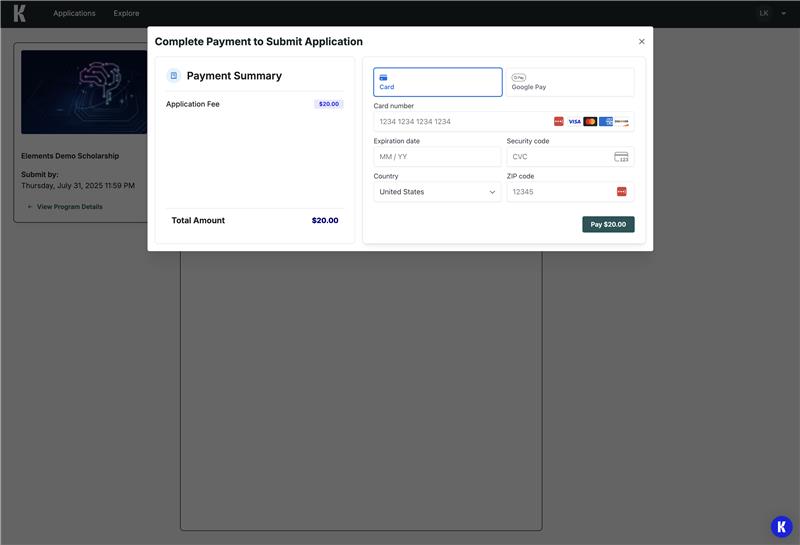Requiring a fee to submit a scholarship or grant application is a decision that should never be taken lightly. After all, most applicants are seeking funding because finances are tight, so introducing a paywall could run counter to your mission if implemented without care.
That said, there are some scenarios where application fees may serve a strategic and operational purpose. That’s why we’ve updated the application fee functionality on Kaleidoscope to support programs that need this flexibility, while keeping equity and access at the core.
Here’s what you should consider before implementing an application fee, and when it might actually strengthen your program’s sustainability, quality, or efficiency.
Why and When an Application Fee Might Make Sense
Application fees aren’t for everyone. In fact, most scholarship programs make the decision to avoid charging unless there’s a clear, mission-aligned reason to do so. But for a small segment of programs, requiring a fee can support operations and improve the experience for both reviewers and applicants. Let’s take a look at a few reasons to consider implementing a fee.
To offset high administrative or review costs
Programs with large application volumes or intensive review processes, such as programs with lengthy video interviews or essay questions, may want to use a small fee to help fund reviewer stipends or operational needs.
To filter for serious applicants
Some programs use nominal fees to reduce incomplete or non-serious applications, especially when volume is overwhelming. A small charge can serve as a commitment indicator, without being exclusionary.
To support tiered access or add-ons
With Kaleidoscope’s new response-based fee feature, applicants can opt into specific extras like mentoring, feedback sessions, or access to multiple program tracks. Each triggers a separate, clearly disclosed fee.
For grant competitions, fellowships, or contests
Programs offering major awards or high-prestige opportunities, such as creative competitions or selective fellowships, may use entry fees as part of a competitive process. In these cases, fees are often expected and accepted by applicants.
As a mission-aligned fundraising tool
Some nonprofits or foundations reinvest entry fees directly into funding more scholarships. When communicated transparently, this can create a sense of community support rather than a barrier.
Key Strategies for Using Application Fees Thoughtfully
If you’re considering implementing this new feature, here are a few ways to do it ethically and effectively:
- Consider offering fee waivers for applicants experiencing financial hardship. Kaleidoscope allows admins to submit applications manually on behalf of applicants if a waiver is granted.
- Be transparent about why the fee exists. Clearly explain what the fee supports, whether it’s operations, reviewer stipends, or reinvestment into future awards.
- Test the applicant experience first. Use the Kaleidoscope test application to walk through the full payment process before your program goes live.
- Avoid unnecessary fees. If there’s no clear operational or strategic reason for a fee, it is likely not a sound strategy to add one. The ability to charge is not a requirement, it’s merely a tool for specific scenarios.
How It Works in Kaleidoscope


With our updated integration, programs can:
- Add a fixed application fee for all submissions
- Set up response-based payment, where specific answers trigger fees (e.g., opting into extra services or applying to multiple program options)
- Collect all payments via a secure payment processor. A minimal per transaction processing fee will be assessed
- Automatically submit an application once payment is completed
- View detailed submission status and history within the admin dashboard
- Once the application is closed, Kaleidoscope will securely send all collected application fees directly back to the program.
This feature is off by default, so if you’re interested in enabling it for your program, please contact your Kaleidoscope Customer Success Manager.
Bottom Line
Adding a charge to your application process should never be a default decision. But when used intentionally, transparently, and ethically, it can help sustain your program, enhance your applicant experience, or improve the quality of submissions.
Application fees aren’t right for everyone, but now, you have the flexibility to decide what’s right for you.











